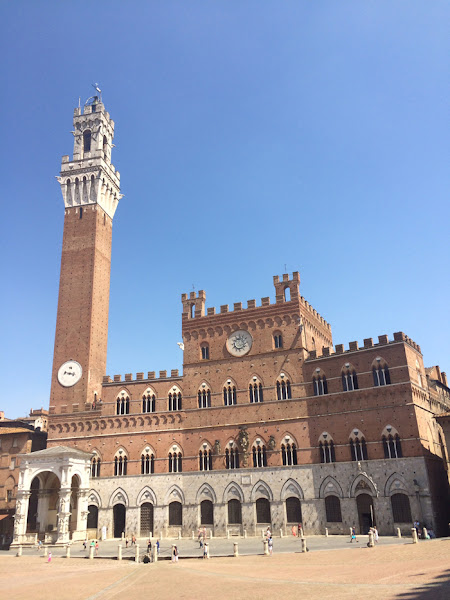Sunday, October 01, 2023
Pride in the City's Appearance
Trevor Dean and Daniel Waley, The Italian City-Republics, 5th ed. (London: Routledge, 2023), pp. 103-104, with notes on p. 123:
Newer› ‹Older
To the proud citizens of a major commune, their city's outward aspect was an important element in its prestige. It was in this spirit that the Sienese decided to have a public meadow within the city because:Siena, Palazzo Pubblico:Among those matters to which the men who undertake the city’s government should turn their attention, its beauty is the most important. One of the chief beauties of a pleasant city is the possession of a meadow or open place for the delight and joy of both citizens and strangers, and the cities and some towns of Tuscany, as well as some other honourable cities, are honourably supplied with such meadows and open places.1The element of pride in the city's appearance, and above all of a competitive determination to outshine their neighbours, was particularly strong among the Sienese, though the trait is to be found everywhere. The immensely ambitious cathedral which the Sienese began in the fourteenth century was a retort to the cathedral begun by the Florentines in 1296. Their Palazzo Pubblico, which was being built at the same time, was another attempt to show that Siena could build more impressively than its northern neighbour. The Sienese councillors decided, when discussing this building, that:It is a matter of honour for each city that its rulers and officials should occupy beautiful and honourable buildings, both for the sake of the commune itself and because strangers often go to visit them on business. This is a matter of great importance for the prestige (qualitatem) of the city.2A particular subject of pride to the Sienese (and rightly so, every visitor to the city will surely agree) was their Piazza, the Campo. Hopeful plans were formed as early as the thirteenth century for keeping the appearance of this piazza uniform by insisting that all the houses looking on to it should have the same type of window. And in 1346 the chronicler Agnolo di Tura proudly recorded:on 30 December they finished paving the campo of Siena in stone, and it is considered the most beautiful square, with the most beautiful and abundant fountain and the most handsome and noble houses and workshops around it of any square in Italy.31 Document cited by Braunfels, Mittelalterliche Stadtbaukunst in der Toskana, p. 208n.
2 G. Milanesi, Documenti per la storia dell'arte senese (Siena, 1854), I, p. 180.
3 RIS, n.s., XV, VI, p. 550.

